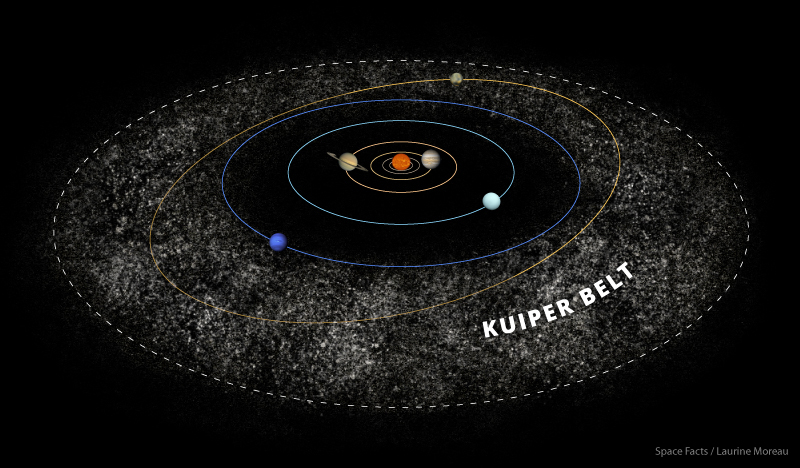The Kuiper Belt is a vast ring of icy objects orbiting the Sun beyond the orbit of Neptune. It’s a relic of the early Solar System, a region where countless icy bodies, including dwarf planets like Pluto, reside.
A Frozen Frontier
The Kuiper Belt is a vast and cold region, extending from the orbit of Neptune at about 30 astronomical units (AU) to approximately 50 AU from the Sun. This region is home to a diverse population of icy objects, including dwarf planets, comets, and other debris.
Key Objects in the Kuiper Belt
- Pluto: Once considered the ninth planet, Pluto is now classified as a dwarf planet. It is the largest known object in the Kuiper Belt.
- Eris: A dwarf planet slightly larger than Pluto, Eris is located in the scattered disk, a region beyond the Kuiper Belt.
- Makemake: A dwarf planet with a highly elliptical orbit.
- Haumea: A dwarf planet with an elongated shape and a rapid rotation period.
The Origins of the Kuiper Belt
The Kuiper Belt is believed to be a remnant of the early Solar System. During the formation of the planets, much of the leftover material in the outer Solar System coalesced into these icy bodies. The gravitational influence of the giant planets, particularly Neptune, scattered some of these objects into the Oort Cloud or ejected them from the Solar System entirely.
Exploring the Kuiper Belt
The exploration of the Kuiper Belt has been a major focus of space exploration. The New Horizons mission, which flew by Pluto in 2015, provided unprecedented insights into the dwarf planet and its moons. Future missions may target other Kuiper Belt objects to further our understanding of the Solar System’s formation and evolution.
The Oort Cloud: A Distant Reservoir
Beyond the Kuiper Belt lies the Oort Cloud, a spherical shell of icy objects that surrounds the Solar System. Comets, such as Halley’s Comet, originate from the Oort Cloud. These long-period comets take thousands of years to orbit the Sun.
The Kuiper Belt and Oort Cloud are crucial components of our Solar System, providing valuable clues about its history and evolution. As we continue to explore these distant regions, we may uncover new mysteries and deepen our understanding of the cosmos.
Would you like to delve deeper into a specific aspect of the Kuiper Belt, such as its formation, the objects within it, or future exploration missions?
